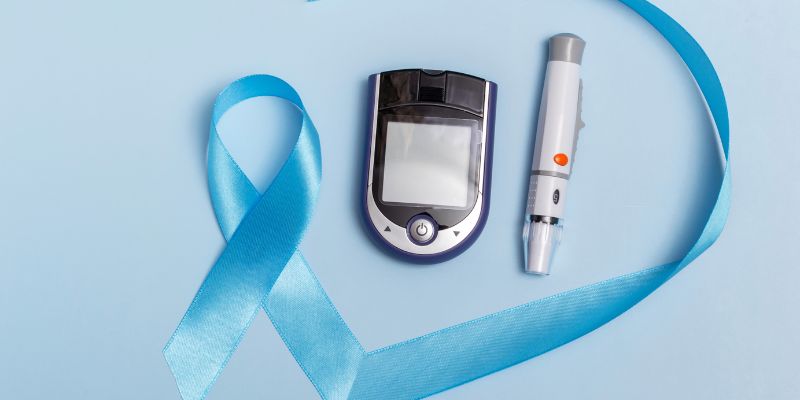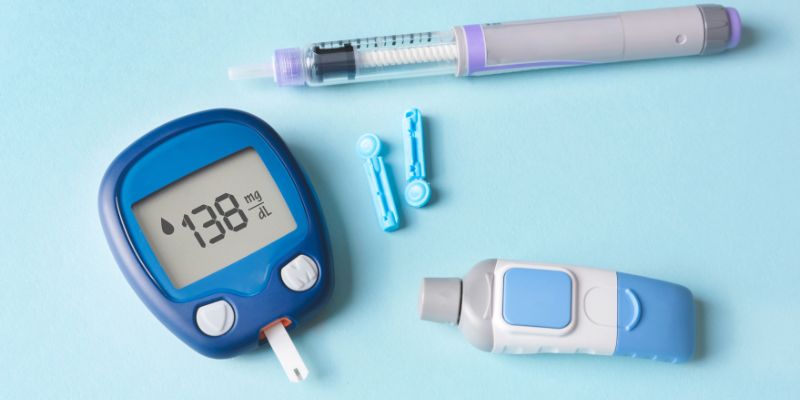Latent autoimmune diabetes in adults (LADA): Everything You Should Know
Latent autoimmune diabetes in adults (LADA) is a form of type 1 diabetes that comes on slowly and is often mistaken for type 2 diabetes. Usually affecting those over thirty, it may not first call for insulin treatment. This kind of diabetes is special since it blends traits of type 1 and type 2 diabetes.
Early identification of LADA is crucial since it enables better treatment plans that emphasize maintaining insulin production for as long as feasible. This article will cover the causes, symptoms, diagnosis, and treatment of LADA, as well as the differences between other forms of diabetes.

What is Adult Latent Autoimmune Diabetes?
LADA shares characteristics of type 1 and type 2 diabetes, so it is occasionally referred to as "type 1.5 diabetes." In type 1 diabetes, the immune system targets and kills the beta cells, producing insulin in the pancreas. LADA slows down this process; hence, persons may first be misdiagnosed with type 2 diabetes.
Though the precise origin of LADA is unknown, environmental and genetic elements are thought to play a part. LADA is an autoimmune disease; therefore, the body's immune system mistakes healthy cells, as in type 1 diabetes. Unlike type 1 diabetes, however, those with LADA still generate some insulin upon first diagnosis.
Causes of Latent Autoimmune Diabetes in Adults (LADA)
LADA mostly results from an autoimmune reaction in which the immune system mistakenly targets pancreatic cells producing insulin. That gradually lowers insulin production over time. LADA may partly arise from environmental factors such as viral infections and genetic predispositions. People with LADA also typically have some genetic markers linked with autoimmune disorders.
These are some possible LADA risk factors and causes:
- Genetic Predisposition: Some people are more prone to autoimmune illnesses depending on particular genes.
- Environmental Triggers: The autoimmune response could be triggered by viral infections and some poisons.
- Autoimmune Disorders: Those with other autoimmune disorders, such as celiac disease or thyroid disease, could be more likely to have LADA.
Symptoms of Latent Autoimmune Diabetes in Adults (LADA)
LADA symptoms sometimes mimic those of type 1 and type 2 diabetes. Still, the course of symptoms in LADA often is slower than in type 1 diabetes. For this reason, especially in persons over thirty, it is occasionally misinterpreted as type 2 diabetes.
Typical symptoms include:
- Polyuria, or frequent urination
- Enhanced thirst, or polydipsia
- Undetermined weight loss
- Tiredness
- Vision is blurred; slow-healing wounds
- Numbness (particularly in hands and feet)
LADA sufferers may not need insulin early on since their bodies may still generate minute levels. However, as the autoimmune process proceeds, insulin production falls, and insulin treatment becomes required.
Diagnosis of Latent Autoimmune Diabetes in Adults (LADA)
LADA's symptoms cross those of type 1 and type 2 diabetes; hence, diagnosis might be difficult. Many LADA sufferers are first treated for type 2 diabetes until more research reveals their ailment is autoimmune. Usually combining blood testing to look for autoantibodies and track insulin production levels, a conclusive diagnosis of LADA usually calls for
Key tests for diagnosing LADA include:
- Autoantibody Tests: Particular antibodies, such as glutamic acid decarboxylase antibodies (GADAs), indicate an autoimmune attack on the cells that produce insulin.
- C-peptide Tests: This test gauges the Pancreas's production of insulin. A low level of C-peptide implies that the pancreas is no longer generating enough insulin.
- Blood Sugar Tests: Monitoring blood sugar control benefits from routine blood sugar testing like HbA1c and fasting glucose.
Doctors may suspect LADA and order these further tests if someone with probable type 2 diabetes exhibits indications of insulin dependence within a few years after diagnosis or responds poorly to oral diabetes medicines.

LADA Treatment and Management:
LADA's care calls for techniques reminiscent of type 1 and type 2 diabetes. However, LADA is progressive, so insulin treatment becomes required gradually. The main objectives of LADA treatment are controlling blood sugar levels and preserving the pancreas's capacity to generate insulin for as long as feasible.
Here are some often-used LADA treatment strategies:
- Insulin Therapy: An early start of insulin treatment could help slow down the course of the condition and preserve insulin-producing cells.
- Blood Sugar Monitoring: Frequent monitoring helps maintain blood sugar levels within desired limits, lowering the chance of consequences.
- Oral Medications: Early on, metformin, among other oral diabetic drugs, could be utilized. For those with LADA, these are sometimes not effective in the long term either.
- Exercise And Diet: Blood sugar levels and general health management depend on a good diet and consistent physical exercise.
Sometimes, efficient management of LADA requires a customized mix of medications.
Differences Between LADA, Type 1, and Type 2 Diabetes
Good diagnosis and therapy depend on an awareness of how LADA varies from type 1 and type 2 diabetes. Although all three illnesses have issues with insulin production or usage, their etiology, age of onset, and course of progression vary.
- Type 1 Diabetes usually starts in childhood or youth and needs insulin therapy right away because the body stops making insulin.
- Type 2 Diabetes usually starts in adults and is often linked to being overweight and bad habits. The body grows resistant to insulin even when its production keeps on.
- LADA comes in between. It starts in adults over thirty and shows up slowly. Insulin generation continues, but the autoimmune attack on beta cells causes it to drop over time.
Misdiagnosis and Challenges in LADA
LADA's sluggish development makes it sometimes misinterpreted as type 2 diabetes. LADA can advance over months or years, unlike type 1 diabetes, when symptoms show up quickly. Healthcare professionals find it difficult to distinguish LADA from type 2 diabetes without specific testing, given the overlapping symptoms. Misdiagnosis can have major repercussions. Those with LADA treated for type 2 diabetes might not get insulin early enough, which would cause poorly regulated blood sugar and a quicker disease progression.
Indices of possible misdiagnosis include early insulin reliance despite first treatment, poor response to oral diabetic medicines, and family history of autoimmune illnesses. Managing LADA successfully and avoiding complications, including heart disease, nerve damage, and renal difficulties, depends on a precise diagnosis.
Conclusion:
Adult latent autoimmune diabetes (LADA) is a special kind of diabetes having traits of type 1 and type 2 diabetes. Early recognition of LADA symptoms will help to guarantee appropriate treatment, which usually consists of insulin therapy. If you have type 2 diabetes but are not responding to medication, it could be worth looking at LADA, as misdiagnosis can result in inadequate therapy.












